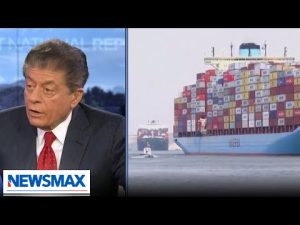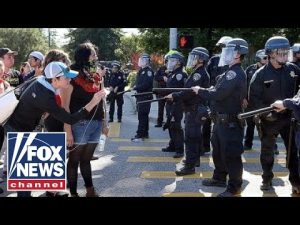In a landscape filled with political maneuverings, eyes have turned once more toward the Supreme Court as it deliberates on a matter that could send shockwaves through the economy—President Trump’s authority to impose tariffs. This drama is unfolding after two lower courts ruled that Trump’s tariffs may have overstepped his presidential powers since they lacked congressional approval. With stakes this high, the President is sounding an alarm, warning that a ruling against him could lead to devastation on a national scale.
President Trump recently took to Truth Social, sharing concerns that a negative decision from the Supreme Court regarding the tariffs could result in a staggering loss of over $3 trillion. While the exact origins of this number might be as elusive as a cat at bath time, it certainly caught the attention of many. The President stressed that the fallout from such a ruling would be unsustainable for the country, threatening both its economy and national security. Such high-stakes language was all part of an effort to underscore the seriousness of the situation, and it seems clear that Trump would prefer to keep the focus on the potential dangers of any judicial backlash on his tariff policies.
Judge Andrew Napolitano, a seasoned judicial analyst, weighed in on the implications of Trump’s position. He explained that the Supreme Court isn’t in the business of taking new evidence—it’s more about reviewing what has already been presented in lower courts. Therefore, trying to introduce new figures like the infamous $3 trillion amount at this late stage could be problematic. After all, the justices deal with the law, not with fresh pitches that weren’t part of the original case. The unfolding saga demonstrates a classic tug-of-war between the branches of government and raises questions about where the authority truly lies when it comes to tariffs.
During the oral arguments regarding the tariffs, the government’s lawyer, a well-respected figure, argued that tariffs should be viewed through the lens of foreign policy rather than sheer financial gain. This distinction is crucial; if tariffs are merely a tax, then it’s Congress that holds the power to impose them. The President’s attempts to emphasize the monetary angle could derail this argument and complicate matters further. Instead of making a case based on the legislative process, focusing on financial repercussions risks undermining the administration’s position regarding national security and foreign relations.
As the political narrative continues to evolve, there’s also another pressing issue related to the government’s potential shutdown and food stamp benefits that hangs in the balance. The Supreme Court has put a temporary hold on determining whether the Trump administration can withhold full food stamp payments. This stay suggests that lawmakers are under the wire to reach an agreement before a deadline that could affect millions relying on that support. However, this is more than just a bureaucratic tussle; it highlights the broader implications of fiscal policy and government funding that resonate deeply with voters.
In the end, whether it’s tariffs or food benefits, these stories encapsulate the complexities of the current political climate. They serve as reminders that while the powers of the executive branch are substantial, they are always subject to checks and balances. As the Supreme Court prepares to rule on these critical issues, the entire nation waits with bated breath, wondering how the chips will fall in this intricate game of governance.







